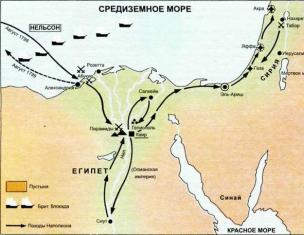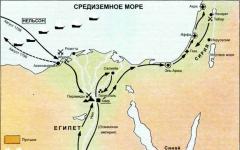Map of future autobahns (freeways) in Poland
The most important roads in Poland are divided by class into Motorways - Autostrady (designated A), Expressways - Drogi Ekspresowe (designated S), Main roads of the main direction - Drogi Główne Ruchu Przyśpieszonego(designated DP), Main roads - Drogi Główne (designated DG), as well as Drogi Zbiorcze (Z), Drogi lokalne - Local roads (L),
Drogi dojazdowe - Connecting roads (D).
National highways in Poland include A, S, GP and sometimes G class roads. Voivodeship roads - classes G, Z, GP. Roads in Povetov Poland - classes G, Z, L. Municipal roads - classes L, D, Z.
The following routes pass through the territory of Poland: European highway routes: E28, E30, E36, E40, E65, E67, E75, E77, E261, E371, E372, E462,
Poland's priorities for 2007-2015 include the construction of 500 to 800 km of motorways and 1,650 km of expressways. In particular, highways A1, A2, A4 will be completed; expressways S3, S5, S7, S8, S17, S19, S69. A1 motorway(Autostrada A1: Gdańsk - Toruń - Łódź - Częstochowa - Gliwice - Gorzyczki)
A1 motorway(Autostrada A1: Gdańsk - Toruń - Łódź - Częstochowa - Gliwice - Gorzyczki)
Distance - 582 km, active section - 42.5 km A1 is a proposed high-speed motorway connecting central and southern Poland (from Gdansk on the Baltic Sea via Lodz to Polish-Czech border, where it joins the Czech motorway D1). The motorway is part of the European road route E75.
Construction of the first section of the Tuszyn - Piotrków Trybunalski motorway took place already in 1978-1989. In July 2005, construction began on the 90 km section Rusocin - Nowe Marzy. Moreover, 25 km (Rusocin - Swarozyn) have already been put into operation. In January 2007, construction began on the Sośnica - Bełk section. The Poles plan to build the A1 motorway by 2013.
Official sites for the construction of the A1 motorway:
Section Rusocin - Nowe Marzy a1.com.pl
Section Sośnica - Bełk a1.sosnica-belk.pl
Section Świerklany - Gorzyczki a1.swierklany-gorzyczki.pl
Watch the video - A1 motorway in Poland:
 A2 motorway(Autostrada A2: Świecko - Poznań - Łódź - Warszawa - Siedlce - Kukuryki)
A2 motorway(Autostrada A2: Świecko - Poznań - Łódź - Warszawa - Siedlce - Kukuryki)
Distance - 620 km, active section - 252.2 km A2 - almost half built. The motorway is part of the European Road Route E30 and connects the west and east of Poland. Starts at the Polish-German border (A12 Autobahn) in the village of Świecko, Poland. The highway route passes through the largest Polish cities (Poznan, Lodz, Warsaw) and ends in the village of Kukuryki, where on the border with Belarus it turns into the M-1 Motorway (to Minsk).
The first section of the A2 motorway Nowy Tomyśl-Poznań-Września-Konin, about 150 km long, was opened in 2004. In July 2006, another Konin-Stryków site near Lodz was opened. Both sections are paid, as they were built on a concession basis by Autostrada Wielkopolska S.A. Poland plans to complete the construction of the A2 Motorway by 2010 (on the Polish-German border - Warsaw section) and by 2014 (on the Warsaw - Polish-Belarusian border section).
Jaracz -skyscrapercity.com)
Official sites for the construction of the A2 motorway:
www.autostrada-a2.pl
 A4 motorway(Autostrada A4: Jędrzychowice - Wrocław - Katowice - Kraków - Rzeszów - Korczowa)
A4 motorway(Autostrada A4: Jędrzychowice - Wrocław - Katowice - Kraków - Rzeszów - Korczowa)
Distance - 670 km, active section - 375 km The A4 motorway is also almost half completed. The motorway is part of the European Road Route E40 and connects the west and east of Poland. Starts at the Polish-German border (Autobahn A4, Germany) in the village of Jędrzychowice, Poland. The autobahn route passes through Wroclaw, Katowice, Krakow and ends in the village of Korczowa, where on the border with Ukraine it turns into the M-10 Motorway (Krakovets - Lviv).
It should be noted that the eastern section of the highway from Krakow to the Polish-Ukrainian border was planned to be built by 2013. However, due to the participation of Poland and Ukraine in the final stage of Euro 2012, the motorway will be built by 2012.
:
Autostrada Małopolska A4 www.autostrada-a4.pl
Section Zgorzelec - Krzyzowa www.zgorzelec-krzyzowa.pl
Section Wielicka - Szarow www.wielicka-szarow.pl
 A6 motorway(Autostrada A6: Kołbaskowo (Polish-German border) - Szczecin)
A6 motorway(Autostrada A6: Kołbaskowo (Polish-German border) - Szczecin)
Distance - 21 kmThe A6 motorway is known in Poland as the Berlinka. The history of the construction of this highway dates back to Germany in the 30s, when the legendary German autobahns were first created by order of Hitler. The section in Poland is a continuation of the Reichsautobahn (Reich Autobahn), as part of the Berlin - Königsberg (today Kaliningrad) autobahn project.
The A6 motorway originates on the Polish-German border near the village of Kolbaskowo, being a continuation of the A11 Autobahn, Germany. The A6 ends in the Szczecin area, where it becomes the S3 road. The motorway is part of the European road route E28.
Construction of the Berlin-Königsberg Autobahn in the 1930s (berlinka.pcp.pl)

A6 motorway in Poland today (berlinka.pcp.pl)
 Motorway A8 (Autostrada A8: Bielany Wrocławskie (A4 junction) - Wrocław - Psie Pole)
Motorway A8 (Autostrada A8: Bielany Wrocławskie (A4 junction) - Wrocław - Psie Pole)
It is a project for a ring highway around Wroclaw (). The planned distance is 35.4 km. Coincides with the European road route E67. Construction of the A8 motorway is scheduled for completion in 2010. Let us now try to draw an analogy with the planned construction of a new ring road around Kyiv. The A8 motorway bypassing Wroclaw has a design distance of only 35.4 km. Kyiv district - 234 km. The decision to build the A8 in Poland was made back in 2003. In 2005, the purchase of land plots from landowners began. The final A8 project was adopted only in 2006. And at the same time, according to the most optimistic forecasts, the highway will be built by 2010. What can we say about the new bypass in Kyiv, the length of which will be 7 times greater? But the situation on the land purchase and sale market is much more speculative and darker. Until now, the population has not been notified where exactly the route of the new ring road in Kyiv will be, what are the stages and timing of the project, etc. The question remains open.
Official sites for the construction of the A4 motorway:
Map of the A8 motorway on the road map of Wroclaw in pdf format
Project for the construction of a bridge on the A8 motorway Power Point presentation
 Autostrada A18: Olszyna (Polish-German border) - Krzyżowa (A4 junction near Bolesławiec)
Autostrada A18: Olszyna (Polish-German border) - Krzyżowa (A4 junction near Bolesławiec)
Distance - 78 km. Coincides with the European road route E36. Starts with Polish-German border(Autobahn A15, Germany) and, coinciding with the Home Road 18, ends at the intersection with the A4 Autostrada near the village of Krzywa. Construction is planned to be completed by 2009-2010.
More detailed information about highways in Poland can be found on the following resources:
1. Generalna Dyrekcja Dróg Krajowych i Autostrad Official website of the General Directorate of Polish Regional Roads and Motorways
2. Mapa kamer monitorujących
Video surveillance map of traffic conditions on Polish roads
3. Infrastruktura drogowa w Polsce Forum about road infrastructure in Poland on skyscrapercity.com
4. Road map of Poland - 1900 x 1788 px from the site www.siskom.waw.pl
5. Programa budowy drog krajowych na lata 2008-2012; pdf Polish highway construction program for Euro 2012
Without exaggeration, we can say that Ukrainians enter Europe through Poland. Many of our fellow citizens travel to this country for shopping, vacation and work, conduct business there and educate their children. And it is through Poland that we begin to perceive the European way of life. And right from the border.
Autobahn to the West
The first thing you need to do when entering Poland is to turn on your headlights. Here you need to drive with low beam headlights on 24 hours a day and whole year. Of course, this does not apply to those cars that have daytime running lights.
If we are heading to Germany through Poland, we take the modern autobahn, which leads past populated areas directly to the western border of the country. This 650 km long road was built quite recently and was made according to all the rules for the construction of European highways.


/
Motorways bypass cities, so when crossing the country on the way to Germany, drive through settlements you won't have to
The first 250 km to Krakow is free; travel for money will be available here from 2018. But further on the A4 road and some sections of the A1 and A2 highways you will have to pay. Payment is possible in Polish zlotys, euros, dollars, as well as by credit card. Usually, when entering a toll road, you need to take a ticket, and the barrier will open. Payment is made upon leaving the paid area. But there may be other payment options: for example, both at the entrance and at both ends of the plots. The fare is 0.2 zlotys (about 1.2 UAH) per kilometer.

Checkpoints on toll roads can be either operator-operated or fully automated.

In addition to motorways, which are designated by the letter A, in Poland there are so-called expressways(letter S). Roads with different designations and lanes have their own speed limits. Moreover, the limit sometimes depends on the time of day. Thus, during the day in populated areas, as throughout Europe, in Polish cities and villages you can drive at a maximum speed of 50 km/h. But at night the “Soviet” limit already applies - 60 km. On a country road, the maximum speed depends on the number of lanes. On a single-lane road the limit is 90 km/h in each direction, and on a two-lane road the limit is 100 km/h. If the road has a divider, you can drive up to 120 km/h on it, and on highways – up to 140 km/h. In addition, you need to follow the signs - the limit may be different for them (in both directions). Speed limits are monitored not only by automatic cameras, but also by mobile police patrols, often even in unmarked cars. And if you exceed the speed limit in a populated area by 50 km/h (that is, drive a little faster than 100 km/h), the police officer has the right to take away your license for three months. For smaller offenses, the fines are lower: speeding up to 10 km/h is 26 euros in a populated area and half as much outside it. It is better for a foreigner to pay the fine right at the scene of the violation, otherwise the police have the right to detain the person until he pays or proves his innocence in court.
A little bit of the past
Apart from several autobahns, the rest of the roads in Poland were built during socialism. But in quality they do not even remotely resemble domestic ones. Smooth asphalt, presence of bumpers, plenty of clear signs, traffic lights and circular movements. The only problem is the low speed of movement and the presence of large traffic. After all, there are a lot of cars in Poland, and heavy traffic not only in big cities, but also in small ones and even between them.
Most Polish towns look quite European, and the organization traffic It's also very civilized there.


/
There is no Vodafone operator in Poland, but we are already accustomed to the fact that abroad it is profitable to use communication with this operator. What to do? Vodafone Ukraine subscribers do not have to worry - attractive tariffs are valid in the network of any Polish operator. Even in the minimum Red S package, a Vodafone Ukraine subscriber is provided with a package of 90 minutes of calls for incoming calls from any operators in the world, as well as within the network of their operator. In addition, you will be able to send 90 SMS or use 90 MB of high-quality European mobile Internet. All these services can be used within seven days from the moment of activation of the “Roaming at home” package. And if there are not enough free minutes, very low tariffs for communication abroad will apply. For example, an outgoing call on the Vodafone Ukraine and MTS Ukraine networks, as well as an incoming call from any operator in the world will cost only 2 UAH. per minute of conversation. An SMS or MMS sent from a Ukrainian phone to any phone in the world costs only 50 kopecks, 100 MB of mobile Internet costs 35 UAH, and outgoing calls to numbers of other subscribers in Ukraine and 16 European countries cost 10 UAH. in a minute.
Photo from the editorial archive
If you find an error, please highlight a piece of text and click Ctrl+Enter.
The minimum period for a passenger car (less than 3.5 tons) is 7 days (3 euros). A vignette for 30 days costs 7 euros, for 90 days - 13 euros, for a year - 28 euros.
Failure to pay the fare will result in a fine of 50 to 100 euros. And this does not eliminate the need to buy a vignette.
There are also several places where you will have to pay extra for using roads/bridges/crossings.
Serbia
Belarusians do not require a visa to visit this country (but there are restrictions). There are also often cars with our license plates there. Drivers should be aware that they will have to pay to use the main highways leading to Belgrade.
Tolls are collected at special points located along the routes. As in Poland, toll areas are closed with barriers (you won’t be able to drive past the booth). You can pay either in cash or by card. The cost is 0.03 euros per 1 km of travel.

Bulgaria
Many Belarusians go to the beaches of Nessebar and Sozopol by car in the summer. Experienced travelers know that in Bulgaria foreigners are required to pay for road use. The amounts are small: a week - 8 euros, a month - 15 euros, three months - 28 euros.
The greatest difficulties are associated with purchasing a vignette, which must be placed in the lower right corner of the windshield. Most tourists tend to buy it immediately at the border, where special points are located. As a result, queues form. Although if you drive literally a few hundred meters, you can do this in a calm environment.
You can also purchase a vignette at some gas stations (keep in mind that not all gas station networks have the right to do so).
They say that starting next year it will be possible to pay for the use of Bulgarian roads via the Internet.
Sweden
Another country where Belarusians can get by car (using a ferry, in particular) is Sweden. In our publications we often refer to the Scandinavian experience as the best in the field of road safety. What about tolls? It is not charged. That is, the trails can be used free of charge. The only exception is traffic on bridges passing through several straits.
However, in the two most major cities- Stockholm and Gothenburg - a fee has been introduced, which is designed to reduce the transport load on the busiest days - from Monday to Friday (and on working hours). The need to pay it rests not only with the Swedes, but also with city guests.
The invoice is issued monthly by a special service.
Finland
Again, like its neighbor, Finland does not consider it necessary to charge road use fees to car owners. This rule applies to both Finns and foreigners.
Italy
The Italian road toll system still needs to be sorted out. The highway system is toll. The amount depends on the road, mileage and type of vehicle. Did you notice? There are too many components that affect the final amount. For example, for 355 km of the motorway from Rimini to Palmanova, our colleagues paid 25 euros during a business trip.
The technology is simple. When leaving the highway, you need to take a special ticket (otherwise the barrier will not open), and when leaving, return it to the machine and pay the specified amount. All guidebooks note that foreigners in cars should not enter the yellow Telepass lane, but rather choose the row marked in white: cards and cash are accepted there.
In accordance with the Law on Toll Highways and the Republican Road Fund, drivers vehicles are required to pay for travel on toll highways in Poland. The country has two toll collection systems: manual system And electronic - viaTOLL. Drivers of vehicles can choose* the most convenient way to pay for travel (payment system) depending on the routes.
The manual payment system operates on the section of the A2 motorway Konin - Stryków and on the section of the A4 motorway Bielany-Wrocławskie - Sośnica. When entering a section of the highway, the driver of a vehicle receives a ticket, on the basis of which, when exiting the highway, the toll is paid at the toll collection point. Payment is collected at toll collection points. The fare depends on the type of vehicle and the distance.
Table: Toll system for toll highways in Poland depending on the vehicle category.
| Vehicle | manual | electronic viaTOLL | Roads A and S | Roads GP and G | ||||||
| Vehicle classes in EURO depending on exhaust emission limits | 2 | 3 | 4 | 5+ | 2 | 3 | 4 | 5+ | ||
|
Motorbike Motorcycle with trailer |
0,05 | |||||||||
|
Automobile A car with a trailer with a total permissible maximum weight of the car and trailer ≤ 3.5 tons |
0,10 | |||||||||
| A vehicle with a trailer with a total permissible maximum weight of the vehicle and trailer exceeding 3.5 tons | 0.40 | 0.35 | 0.28 | 0.20 | 0.32 | 0.28 | 0.22 | 0.16 | ||
|
Van with a permissible maximum weight ≤ 3.5 tons Van with trailer with a total permissible maximum weight of vehicle and trailer ≤ 3.5 tons |
0,10 | |||||||||
|
Minibus with a capacity of 9 or less passengers (including driver) Minibus with a capacity of 9 or less passengers (including the driver) with a trailer with a total permissible maximum weight of the vehicle and trailer ≤ 3.5 tons |
0,10 | |||||||||
| Minibus with a capacity of less than 9 passengers with a trailer with a total permissible maximum weight of the minibus and trailer exceeding 3.5 tons | 0.40 | 0.35 | 0.28 | 0.20 | 0.32 | 0.28 | 0.22 | 0.16 | ||
|
Tractor with trailer or semi-trailer with a permissible maximum weight of over 3.5 tons |
||||||||||
|
Truck with a permissible maximum weight from 3.5 to 12 tons Truck with a permissible maximum weight from 3.5 to 12 tons with a trailer |
||||||||||
|
Truck with a permissible maximum weight over 12 tons Truck with a permissible maximum weight of over 12 tons with a trailer |
0.53 | 0.46 | 0.37 | 0.28 | 0.42 | 0.37 | 0.29 | 0.21 | ||
|
Bus with a capacity of more than 9 passengers (including the driver), regardless of the permissible maximum weight Buses with a capacity of more than 9 passengers (including the driver) and a trailer, regardless of their permissible maximum weight |
0.40 | 0.35 | 0.28 | 0.20 | 0.32 | 0.28 | 0.22 | 0.16 | ||
The Minister of Transport, Construction and Maritime Affairs determined the toll rates for motorways in the Ordinance on the Issue of Toll Rates for Motorways. The toll rate for traveling 1 kilometer on a motorway for vehicles of category 1 (motorcycles): 0.05 zlotys. The toll rate for traveling 1 kilometer on a motorway for vehicles of category 2 (vehicles with a permissible total weight not exceeding 3.5 tons): PLN 0.10.
* - Usage electronic system collection of payment viaTOLL is mandatory for all vehicles and road trains with a permissible maximum weight of more than 3.5 tons, as well as for buses, regardless of their permissible maximum weight, traveling on the toll road network.
Plan your route when shopping in Poland, taking into account possible tolls on toll highways. When traveling to Bialystok from the Republic of Belarus, almost all routes are free.
Poland is the Mecca of Belarusian “purchasers”. But they usually don’t go further than Bialystok. In our road traveler's guide, we will tell you about the peculiarities of driving on Polish roads. Evgeniy, a freight forwarder for a freight forwarding company, who has crossed the length and breadth of Poland more than once, will share his experience.
We pass the border
You can get to Poland through seven border crossings: Bruzgi, Berestovitsa, Brest, Domachevo, Peschatka, Kozlovichi, Pererov. Note that Kozlovichi is used for the passage of freight vehicles only.
— I usually drive through the Bobrowniki crossing, this is the shortest road to Bialystok. But it is not the end point of my route. I never use the electronic queue registration service; I see no point in paying money for it. You arrive at a certain time, and they let you through the first barrier. Then you run into those who stand on neutral territory and wait further. It’s easier to go on a weekday without any appointments. If it’s the weekend, Friday evening, then it’s clear that the “rut” will be there from the cemetery. If it’s a weekday, then everything is fine, everything is fine. My personal record for crossing the border is 15 minutes. But on average, the passage takes 30-40 minutes.
Where to refuel?
The average price of 95 gasoline in Poland at the beginning of May is 1.15 euros, 98 gasoline is 1.21 euros, and diesel fuel is 1.13 euros.
— In general, the most profitable gas stations are in any large Auchan. At least for diesel fuel for sure. When I go to Berlin, I fill up in Poznan at the exit, there is a huge supermarket on the right. In general, prices depend on the region. In the Plock area there is an oil refinery like our Naftan - there will be the cheapest diesel fuel.
Roads and manners
In Poland, tolls are charged for travel on motorways A1, A2, A4. The most expensive is the A2 highway: the cost per kilometer is 0.20 zloty (11 kopecks). On other highways - 0.10 zloty, or 6 kopecks. For example, for travel on A2 from Warsaw to the border with Germany you will have to pay approximately 18 euros. If desired, you can always use bypass roads. The payment method is simple - at the entrance you take a coupon, at the exit you pay for the number of kilometers traveled.
The maximum permitted speed on motorways is 140 km/h, on highways - 120 km/h, on roads with two lanes in each direction - 100 km/h, on country roads with one lane in each direction - 90 km/h. In cities and towns - 50 km/h during the day and 60 at night.
— Everything is fine with the roads in Poland, because at the entrance to the country there is a huge poster: “The roads were built with funds from the European Union.” And the Poles are using this loan to the maximum. I have not seen any other EU country that has built so many roads. The Poles are simply tearing everyone apart. I never drive on "placards". Never at all. Only if I'm in a hurry somewhere. There are toll roads that start at A. All other roads are free. The detours are normal, they just spoil populated areas. Yes, I lose three or four hours if I travel through the whole of Poland, but then I have money for gas station in Poznan. I’ve been driving around Poland without a navigator for a long time, but new junctions and roads appear there regularly, so I would recommend updating the maps on your navigator at least once a quarter.
Police and fines
Fines in Poland have long been European. For speeding in the city, the fine is twice as high as for the same speeding outside the city. Exceeding 10 km/h in the city faces a fine of 27 euros, outside the city - 13 euros. For an extra 20 km/h you will have to pay 54 and 27 euros, respectively.
If you manage to exceed 50 km/h in the city, you will pay 358 euros and lose your license.
Failure to turn on low beam headlights will also result in a fine of 24 euros.

- It’s almost like in Germany here - you rarely see the police, but there are a lot of cameras, but about 50 percent of them are working. There are such boxes, but it’s not clear whether there’s a camera in them or not. Therefore, if you follow the bypass roads, then you need to follow the confident Polish truck driver. He certainly knows which camera is working and which is not. Well, or look for locals in cars with radio antennas. You cling to them and off you go, driving 70-80-90. I cross Poland at night, there are fewer cars and it’s easier to take bypass roads. And if a “sponsor” appears, it also happens quickly.
— There are also hidden police here, they usually drive black Skoda Octavias. This is "tihari". They are sitting together in a car, there is a radar on the panel. They can drive you for a kilometer or 10 km, then overtake you and offer you to watch a video about your violations for good money. I was stopped like that once. They asked for 200 zlotys, but I managed to persuade him to pay a smaller amount. But this is becoming more and more difficult to do. The younger generation came to the service - you can’t communicate in Russian: either in Polish or in English. But I speak Polish, it’s easier for me.
Parking

It will be especially useful for Belarusians to know that parking in disabled spaces is punishable by a fine of 188 euros. Parking in the wrong place - 94 euros. As in most major cities Europe, parking in the city is paid. In the center of Warsaw, 10 minutes will cost 0.5 zloty (0.12 euros), the first hour - 3 zlotys (0.7 euros), the second - 3.60 (0.84 euros), the third - 4.20 zlotys (0 .98 euros). Rates are approximately the same in Krakow, a popular tourist destination. You can pay in cash (coins), or by card or phone.
IN shopping centers your own rules. For example, in Arcadia parking is free, in others you can park for free for the first three hours or on weekends.
— With parking in big cities, of course, everything is clear. There are few places, all are paid. In small towns, only the center will be paid. Blue stripes are paid parking zones, information boards hang, everything is clear. The Poles did not come up with anything new in this regard.
Communication and Internet
There are five mobile operators in Poland: Orange, Play, Plus, T-Mobile, Aero2. Roaming with EU countries is available at “like home” rates. But most providers limit mobile traffic. When you purchase a prepaid package, you receive, for example, a gigabyte of traffic, which can be used in roaming. The rest can only be used in Poland.
— I used to use the Internet when driving around Poland, but now I don’t. Since 2016, the Poles have tightened the requirements; a SIM card can only be purchased with a passport, with mandatory registration. I don’t use it because I don’t need it on the road. And at all gas stations or shopping centers there is free Wi-Fi, you can update the same maps, get directions, pump up something. So I don’t see the point in a SIM card.
If you often travel by car in Europe and you have useful tips, which may be useful to other travelers, send letters to [email protected] (most interesting tips we will publish it in our materials) .







